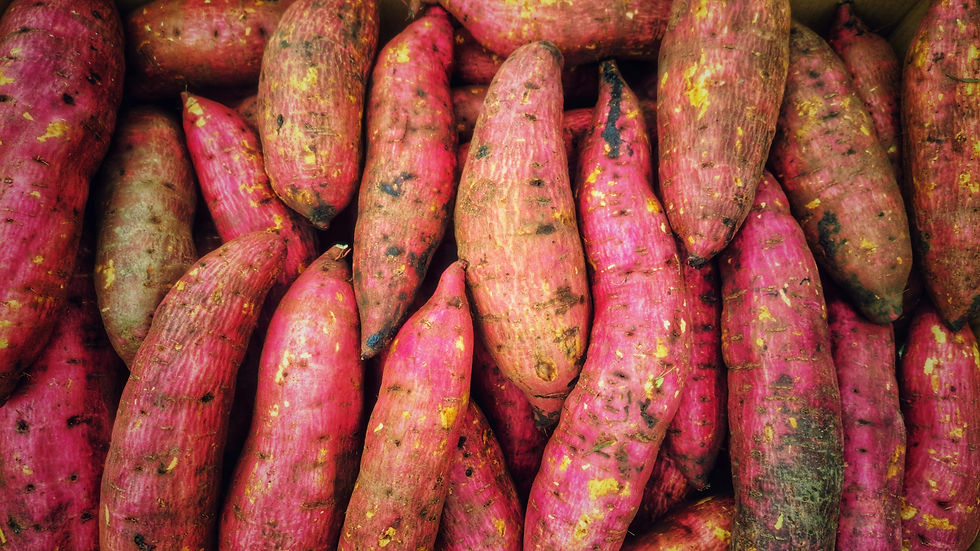Apples & Pawpaws
- Chef Kelly Unger
- Sep 21, 2022
- 3 min read
For me, apples epitomize Fall. Long before the leaves put on their annual show of color, apples arrive quietly on scene to whisper, Fall is coming. Say goodbye to melons and berries, Fall is truly on the way.
Apples are anti-inflammatory, will cleanse your colon and can help rid your body of toxic heavy metals. The phytochemicals in red apples make them brain food and all apples are hydrating. Red apples have the most health benefit of all apple varieties and are best eaten raw with the skin. Apples are both angiogenic and antiangiogenic, they protect your immune system as well as help your body regenerate cells. How many more reasons do you need to eat an apple a day. Truly this amazing super fruit will keep the doctor away.
When you bake with apples, try to use a natural, unprocessed sweetener like maple syrup or honey so that you don’t negate the apple’s anti-inflammatory nature. This week I'm sharing several recipe links for you. The first is Apple Desserts by Martha Stewart with recipes like: Apple Rose Tart, Apple Cider Donut Cake, and Almond and Apple Custard Tart. All of which are pure treat and not focused on health. But we all need a treat! The next collection of recipes is 55 Best Apple Recipes by Food Network . The standouts in this collection for me are: Caramel Apple Soft Pretzels, Apple Slaw with Apple Vinaigrette, Autumn Apple Sangria (because we all need a cocktail!), Cheesecake Stuffed Apples, Shredded Beet and Apple Salad (for something healthy!) and Cornbread Stuffed Baked Apples. Pawpaws are in season in September and may last into early October. Penn State Extension wrote a great article - Pawpaw Fruit in the Garden and the Kitchen by Penn State Extension. From the article: “Known primarily for its large, custard-like fruit, the pawpaw is also an attractive native plant for the landscape. The pawpaw is indigenous to eastern North America and, in its native habitat, grows in wooded areas as an understory tree. Pawpaws serve as host plants for zebra swallowtail butterflies.”
“The fruit has a creamy texture, and the flavor is described as a combination of banana with a hint of mango and pineapple. Pawpaws are very nutritious, rich in Vitamins C, B-6, riboflavin, niacin, folate, and thiamine, and contain minerals such as iron, potassium, magnesium, and phosphorus. To eat a pawpaw, gently rinse fruit under running water, slice it and scoop out the pulp, which has a custard-like texture. The seeds and skin should not be consumed.”
“The pulp can be used immediately or frozen for later use. To freeze, measure pulp and place in a freezer quality bag, labeled with the amount of pulp and the date. Remove as much air as possible from the bag. Use frozen pawpaws within one year. When ready to use, remove the bag with the amount needed for the recipe and thaw in the refrigerator. Pawpaws can be treated in the kitchen as you would bananas, pumpkins, or applesauce. Eat a pawpaw fresh and on its own. Bake it into quick breads and oatmeal bars by substituting pawpaws for bananas in your favorite recipe. Make ice cream, sorbet, or even a cocktail.” Additional pawpaw information and recipes can be found in these links:





Comments